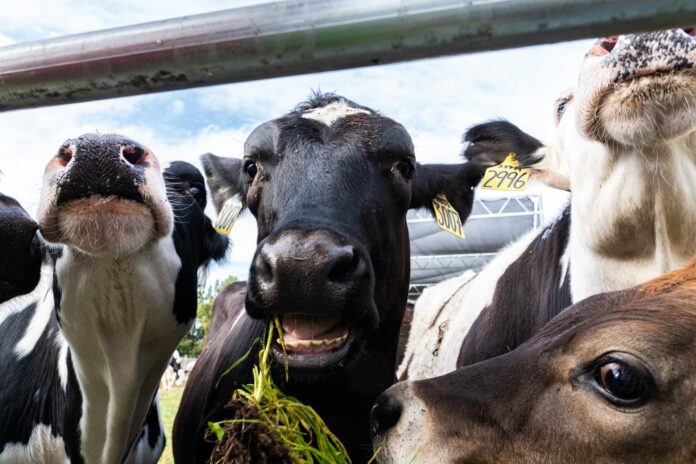UC Davis cows moo-ve the hearts of students and researchers alike
The campus cows are udderly unbeatable, taking home two Best of Davis titles this year: best campus animal and best Davis quirk with 42.4% and 43.2% of students who participated in the Best of Davis survey, respectively, selecting the cows as the best in these two categories. The hundreds of cows on campus are not only a must-see for students but are also significant contributors to research conducted by the university.
According to James Murray, a professor and the chair of the Department of Animal Science, there are about 500 head of cattle that come through the Feedlot, located by the UC Davis Airport, each year. There are about 75 head of cows that come through the Beef Barn each year, located east of the Sheep Barn near the Veterinary Medicine Teaching Hospital.
The Dairy Cattle Facility, located near Tercero, milks around 115 cows every day. UC Davis has an additional facility, the Sierra Foothills Research and Extension Center, which maintains a cow-calf herd of about 160 animals.
James Oltjen, the animal management systems specialist and a lecturer in the Department of Animal Science, stated that the cows have contributed to the university’s research in a number of different fields of study, including nutrition, behavior research, gene editing and veterinary medicine.
“Our animal science researchers are very well-known both nationally and internationally,” Oltjen said. “And all the research we’re doing are ways to make the cows feel better or do better. We don’t do research where we’re trying to figure out if something’s going to hurt them.”
According to Oltjen, the cows are very tame and comfortable around people. He shared that he once had a student who was conducting an experiment on the Feedlot, where she would take temperatures of the animals at different times throughout the day.
“After she’d been doing it for about a month, she had to have another student go with her to keep the other cattle away because they’d come up and try to play with her,” Oltjen said. “That’s the thing about cattle: once they get really tame, they want to play.”
Anita Oberbauer, an animal science professor and the Associate Dean for the College of Environmental and Agricultural Sciences, stated that the campus cows are tame because they are handled by students and faculty from the time they are born.
“Being housed on the campus, they have seen it all,” Oberbauer said. “When someone watches them in a pasture, the cows are often keen to visit.”
Students can participate in hands-on learning experiences with the cows under the supervision of faculty members, such as the Beef Operations Manager Marissa Fisher. Fisher oversees all cattle under the Department of Animal Science. She not only takes care of the health and well-being of the cattle but also helps instruct research labs and oversees students as they directly care for the cattle, including feeding, cleaning, pasture movements and health checks.
“I really love watching the students grow in their knowledge and skill set directly pertaining to cattle and just in life in general,” Fisher said. “The responsibility of taking care of livestock is a large one but I am often so impressed by the students’ dedication and passion for these animals.”
According to Alison Van Eenennaam, who runs the Animal Genomics and Biotechnology Laboratory, there are multiple courses that students can take to learn more about the cows. The two introductory courses (ANS 001 and ANS 002) help students become acquainted with cows and their ability to convert indigestible cellulose, or grass, into milk and beef. The upper-division dairy and beef courses explore how cows consume agricultural byproducts to upcycle what would otherwise be waste in the landfill into nutritious dairy and beef products.
“Sometimes I feel cows get a bad rap, but I think they are amazing, self-propelling, self-cleaning, solar-powered, cellulose-driven bioreactors that convert otherwise inedible food and waste products into nutrient-dense and delicious milk and beef for consumers in California and throughout the world,” Van Eenennaam said.Written by: Liana Mae Atizado— features@theaggie.org





